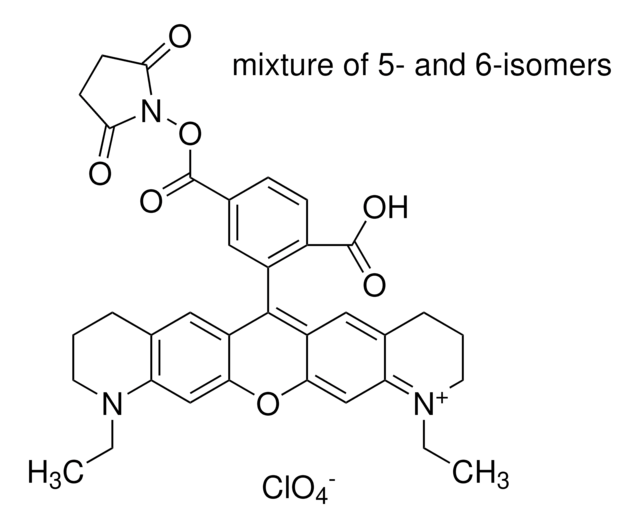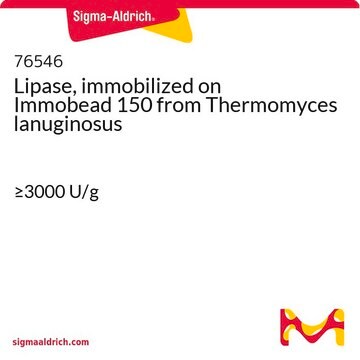88793
Atto 532 NHS ester
BioReagent, suitable for fluorescence, ≥90% (HPLC)
Synonym(s):
Atto 532
Sign Into View Organizational & Contract Pricing
All Photos(1)
About This Item
Recommended Products
product line
BioReagent
Quality Level
Assay
≥90% (HPLC)
≥90% (degree of coupling)
form
powder
manufacturer/tradename
ATTO-TEC GmbH
λ
in methanol: water (1:1) (with 0.1% perchloric acid)
UV absorption
λ: 532-538 nm Amax
suitability
suitable for fluorescence
storage temp.
−20°C
General description
Atto 532 NHS ester is a fluorescent dye related to the well-known laser dye, Rhodamine 6G. The fluorescence activity is excited efficiently at the 515-545nm range. A suitable excitation source for Atto 532 is the 532 nm output of the frequency-doubled Nd: YAG laser.
Application
Atto 532 NHS ester is highly suitable for single-molecule detection applications and high-resolution microscopy such as PALM, dSTORM, and STED. In addition, the dye is used in flow cytometry (FACS) and fluorescence in-situ hybridization (FISH) methods.
Features and Benefits
Characteristic features of the Atto 532 NHS ester are:
- Strong Absorption.
- High Fluorescence quantum yield.
- High Photostability.
- Excellent water solubility.
Not finding the right product?
Try our Product Selector Tool.
Storage Class Code
11 - Combustible Solids
WGK
WGK 3
Flash Point(F)
Not applicable
Flash Point(C)
Not applicable
Personal Protective Equipment
dust mask type N95 (US), Eyeshields, Gloves
Choose from one of the most recent versions:
Already Own This Product?
Find documentation for the products that you have recently purchased in the Document Library.
Customers Also Viewed
Rumelo Amor et al.
Scientific reports, 4, 7359-7359 (2014-12-09)
Standing-wave excitation of fluorescence is highly desirable in optical microscopy because it improves the axial resolution. We demonstrate here that multiplanar excitation of fluorescence by a standing wave can be produced in a single-spot laser scanning microscope by placing a
Kiyoto Kamagata et al.
Journal of the American Chemical Society, 134(28), 11525-11532 (2012-06-14)
A method was developed to detect fluorescence intensity signals from single molecules diffusing freely in a capillary cell. A unique optical system based on a spherical mirror was designed to enable quantitative detection of the fluorescence intensity. Furthermore, "flow-and-stop" control
Moritz Marcinowski et al.
Nature structural & molecular biology, 18(2), 150-158 (2011-01-11)
The endoplasmic reticulum is the site of folding, assembly and quality control for proteins of the secretory pathway. The ATP-regulated Hsp70 chaperone BiP (heavy chain-binding protein), together with cochaperones, has important roles in all of these processes. The functional cycle
John F Lesoine et al.
Nano letters, 12(6), 3273-3278 (2012-06-06)
We present a method for measuring the fluorescence from a single molecule hundreds of times without surface immobilization. The approach is based on the use of electroosmosis to repeatedly drive a single target molecule in a fused silica nanochannel through
Toshiro Saito et al.
Nanotechnology, 22(44), 445708-445708 (2011-10-13)
We fabricated platinum bowtie nanostructure arrays producing fluorescence enhancement and evaluated their performance using two-photon photoluminescence and single-molecule fluorescence measurements. A comprehensive selection of suitable materials was explored by electromagnetic simulation and Pt was chosen as the plasmonic material for
Our team of scientists has experience in all areas of research including Life Science, Material Science, Chemical Synthesis, Chromatography, Analytical and many others.
Contact Technical Service







